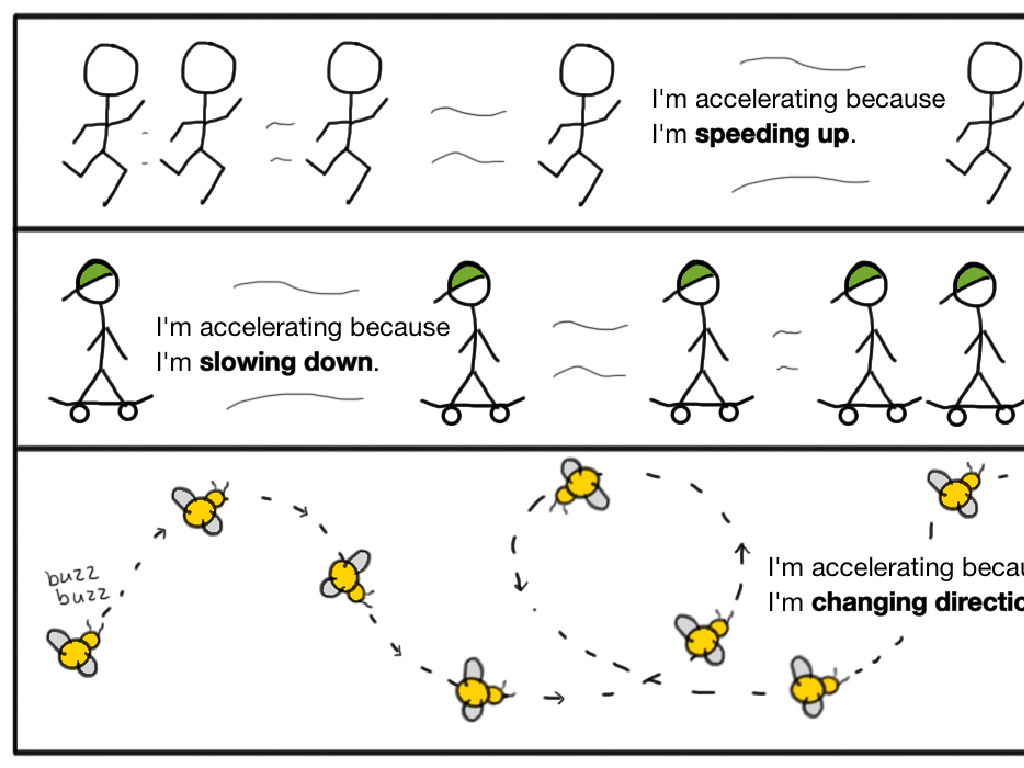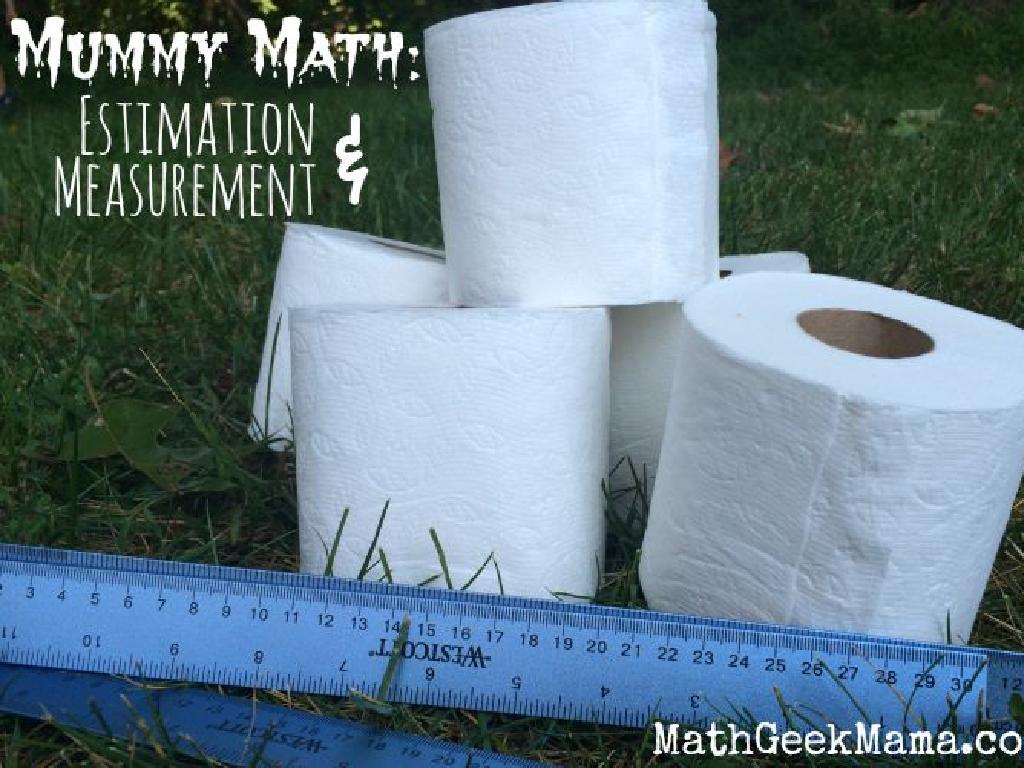Rotations: Find The Coordinates
Subject: Math
Grade: Seventh grade
Topic: Transformations
Please LOG IN to download the presentation. Access is available to registered users only.
View More Content
Rotations: Spinning Around a Point
– What are transformations?
Transformations change a shape’s position or size.
– Today’s focus: Rotations
Rotations turn a shape around a fixed point.
– Rotations in daily life
Clock hands rotate around the center, Earth rotates around its axis.
– Understanding coordinates
After rotation, points have new coordinates.
|
This slide introduces the concept of transformations in mathematics, with a specific focus on rotations. Begin by explaining transformations as operations that alter the position, size, or orientation of a shape. Then, narrow down to rotations, describing them as movements around a central point. Use familiar examples, such as the movement of clock hands or the Earth’s rotation, to illustrate the concept in a way that’s relatable to seventh graders. Finally, touch on the mathematical aspect of rotations by discussing how the coordinates of points change after a rotation. Encourage students to visualize these concepts with hands-on activities, such as rotating objects around a point on a piece of paper to see how their positions change.
Understanding Rotations in Geometry
– Define rotation in geometry
– A rotation turns a shape around a point
– Fixed point: center of rotation
– The point around which a figure rotates
– Movement in rotations
– Points trace circular arcs during rotation
– Measuring rotation degrees
– Degrees indicate the extent of rotation
|
This slide introduces the concept of rotations, a type of transformation in geometry. A rotation involves turning a figure around a fixed point known as the center of rotation. It’s crucial to explain that during a rotation, each point of the figure moves along a circular path. The amount of turn is measured in degrees, which can be clockwise or counterclockwise. Use a protractor to demonstrate how to measure degrees of rotation. Provide examples of rotations in the real world, such as the hands of a clock or a rotating door, to help students visualize the concept.
Understanding Degrees of Rotation
– Rotations: clockwise or counterclockwise
– Common rotation degrees: 90°, 180°, 270°, 360°
– These are standard angles for rotating shapes in math.
– Full rotation equals 360°
– Imagine turning a paper one full circle.
– Original position restored at full rotation
– A shape looks the same after a 360° turn.
|
This slide introduces the concept of rotation in geometry, which is a type of transformation that turns a shape around a fixed point. Emphasize that rotations can be in two directions: clockwise or counterclockwise. Highlight the common degrees of rotation that are often used in problems: 90°, 180°, 270°, and 360°. Explain that a 360° rotation brings the shape back to its original orientation, making it a full circle. Use examples like turning a paper or a wheel to help students visualize the concept. Encourage students to practice rotating shapes on graph paper to understand how the coordinates change with each type of rotation.
Coordinates and Rotations
– Every point has coordinates (x, y)
– Points have new coordinates after rotation
– Learn to find new coordinates post-rotation
– If we rotate (x, y) 90° clockwise, the new coordinates become (y, -x).
– Practice with examples
– Example: Rotate (2, 3) 90° to get (3, -2)
|
This slide introduces the concept of coordinates and their transformation during rotation on a plane. Students should understand that every point can be represented by a pair of numbers, known as coordinates. When a point is rotated around the origin, its position changes, and thus its coordinates change. The class will explore how to calculate the new coordinates after a rotation by applying specific rules depending on the angle of rotation. Emphasize the importance of the direction (clockwise or counterclockwise) and the angle of rotation (90°, 180°, 270°, or 360°). Provide several examples for practice, ensuring students grasp the concept of rotational transformation.
Rotation Rules for Coordinates
– 90° rotation rule: (x, y) to (-y, x)
– For a quarter turn clockwise, swap x and y, and negate y.
– 180° rotation rule: (x, y) to (-x, -y)
– Half turn rotates the point to its opposite quadrant.
– 270° rotation rule: (x, y) to (y, -x)
– For a three-quarter turn, swap x and y, and negate x.
– Applying rules to points
|
This slide introduces students to the rules for rotating points on a coordinate plane. A 90° rotation (a quarter turn) involves swapping the x and y values and changing the sign of the new y-coordinate. A 180° rotation (a half turn) flips the point to its opposite quadrant, changing the signs of both coordinates. A 270° rotation (a three-quarter turn) is similar to a 90° rotation but changes the sign of the new x-coordinate instead. Have students practice these rotations with different points to solidify their understanding. Encourage them to visualize the rotation on a coordinate plane and to check their work by ensuring the rotated point is in the correct quadrant for the given rotation.
90° Rotations on the Coordinate Plane
– Start with point (3, 2)
– Apply 90° rotation rule
– (x, y) becomes (-y, x) for 90° clockwise rotation
– Plot the new point (-2, 3)
– Ensure the new point is correctly plotted
– Draw the rotated figure
– Connect points to visualize rotation
|
This slide introduces students to the concept of rotating a point by 90 degrees on the coordinate plane. Begin with a simple example, the point (3, 2), and apply the 90° rotation rule to transform it into (-2, 3). It’s crucial to emphasize the rule: for a 90° clockwise rotation, the original x-coordinate and y-coordinate switch places, with the y-coordinate becoming negative. After plotting the new point, students should draw the rotated figure to visualize the transformation. Encourage students to practice with additional points and to predict the outcomes before plotting to reinforce the concept.
Rotation Practice: 90°, 180°, 270°
– Practice rotating points 90°
– Rotate a point around the origin to a new position
– Rotate points 180°
– What happens to a point after a half-turn?
– Try rotating points 270°
– How does a point’s position change after a three-quarter turn?
– Complete the worksheet problems
|
This slide is designed to engage students in hands-on practice with rotating points on the coordinate plane. Students should use their worksheets to apply their knowledge of rotations by turning points 90 degrees (a quarter turn), 180 degrees (a half turn), and 270 degrees (three quarters of a turn) around the origin. Encourage students to visualize the rotation process and to note the changes in the coordinates after each rotation. After completing the problems, review the answers as a class to ensure understanding. Possible activities include rotating points using tracing paper, using a protractor to measure angles, or drawing the points on graph paper and visually rotating them.
Class Activity: Create Your Rotation!
– Choose and plot a shape
– Decide rotation degree
– Choose 90°, 180°, or 270° for simplicity
– Apply rotation to shape
– Use the origin as the rotation point for easier calculations
– Share results with class
|
This activity is designed to help students understand the concept of rotation in a coordinate plane. Students will select a simple shape, such as a triangle or rectangle, and plot it on graph paper. They will then choose a degree of rotation – 90°, 180°, or 270° are recommended for beginning practice. Students should use the origin (0,0) as the center of rotation to simplify the process. After applying the rotation, students will determine the new coordinates of their shape’s vertices and share their findings with the class. For the teacher: be prepared to assist with plotting points and calculating rotations. Have a few examples ready to demonstrate, and consider pairing students for collaborative learning. Possible variations of the activity could include using different centers of rotation or challenging students with rotations that are not multiples of 90°.
Wrapping Up Rotations & Homework
– Recap rotation concepts
Remember, rotations turn a shape around a point.
– Review rotation rules
Rules include 90°, 180°, and 270° turns.
– Complete rotation worksheet
Practice with the provided worksheet.
– Present your findings
Be ready to explain your rotation activity.
|
As we conclude today’s lesson on rotations, remind students of the key concepts and rules for rotating shapes on a coordinate plane. Emphasize the importance of the center of rotation and the direction of rotation, whether it’s clockwise or counterclockwise. For homework, students should complete the worksheet that provides practice on finding the coordinates of rotated points and shapes. Encourage them to be thorough as they will be presenting their rotation activity in the next class. This will help reinforce their understanding and give them the opportunity to demonstrate their knowledge. Provide clear instructions on the worksheet and let students know they can reach out for help if needed.






